Research and Development on Therapeutic Agents and Vaccines for COVID-19
A special issue of Vaccines (ISSN 2076-393X). This special issue belongs to the section "Therapeutic Vaccines and Antibody Therapeutics".
Deadline for manuscript submissions: closed (30 November 2023) | Viewed by 6661
Special Issue Editors
Interests: emerging infectious diseases; design and synthesis of gene-targeting compounds; public health
Special Issue Information
Dear Colleagues,
The impact of the COVID-19 pandemic on humankind is persistent, despite the availability of a number of vaccines and some approved therapeutic agents. The continuous evolution of SARS-CoV-2 demands a broadly neutralizing therapy against current and emergent variants that may be helpful for both prevention and treatment. SARS-CoV-2 may not be the last human coronavirus to emerge from animals. To understand the virus replication and mutation mechanism, close monitoring of their populations in the early stages and the investigation of new druggable targets are promising strategies.
We invite contributions from the international community of researchers for this Special Issue on the ongoing progress in COVID-19 research. The goal of this Special Issue is to communicate the recent advances in the domain to the scientific community which may help to focus on the new strategies for containing the COVID-19 virus. In this Special Issue, original research articles and reviews are welcome. Research areas may include (but are not limited to) the discovery of vaccines or drugs/drug targets and the ongoing research and development of vaccines and therapeutic strategies to fight against SARS-CoV-2.
Dr. Ahmed Kamal
Dr. Swapna Ponnampalli
Guest Editors
Manuscript Submission Information
Manuscripts should be submitted online at www.mdpi.com by registering and logging in to this website. Once you are registered, click here to go to the submission form. Manuscripts can be submitted until the deadline. All submissions that pass pre-check are peer-reviewed. Accepted papers will be published continuously in the journal (as soon as accepted) and will be listed together on the special issue website. Research articles, review articles as well as short communications are invited. For planned papers, a title and short abstract (about 100 words) can be sent to the Editorial Office for announcement on this website.
Submitted manuscripts should not have been published previously, nor be under consideration for publication elsewhere (except conference proceedings papers). All manuscripts are thoroughly refereed through a single-blind peer-review process. A guide for authors and other relevant information for submission of manuscripts is available on the Instructions for Authors page. Vaccines is an international peer-reviewed open access monthly journal published by MDPI.
Please visit the Instructions for Authors page before submitting a manuscript. The Article Processing Charge (APC) for publication in this open access journal is 2700 CHF (Swiss Francs). Submitted papers should be well formatted and use good English. Authors may use MDPI's English editing service prior to publication or during author revisions.
Keywords
- COVID-19
- coronavirus
- SARS-CoV-2
- new variants of SARS-CoV-2
- COVID-19 vaccines
- vaccine efficacy
- COVID-19 therapeutics
- COVID-19 therapeutic targets






